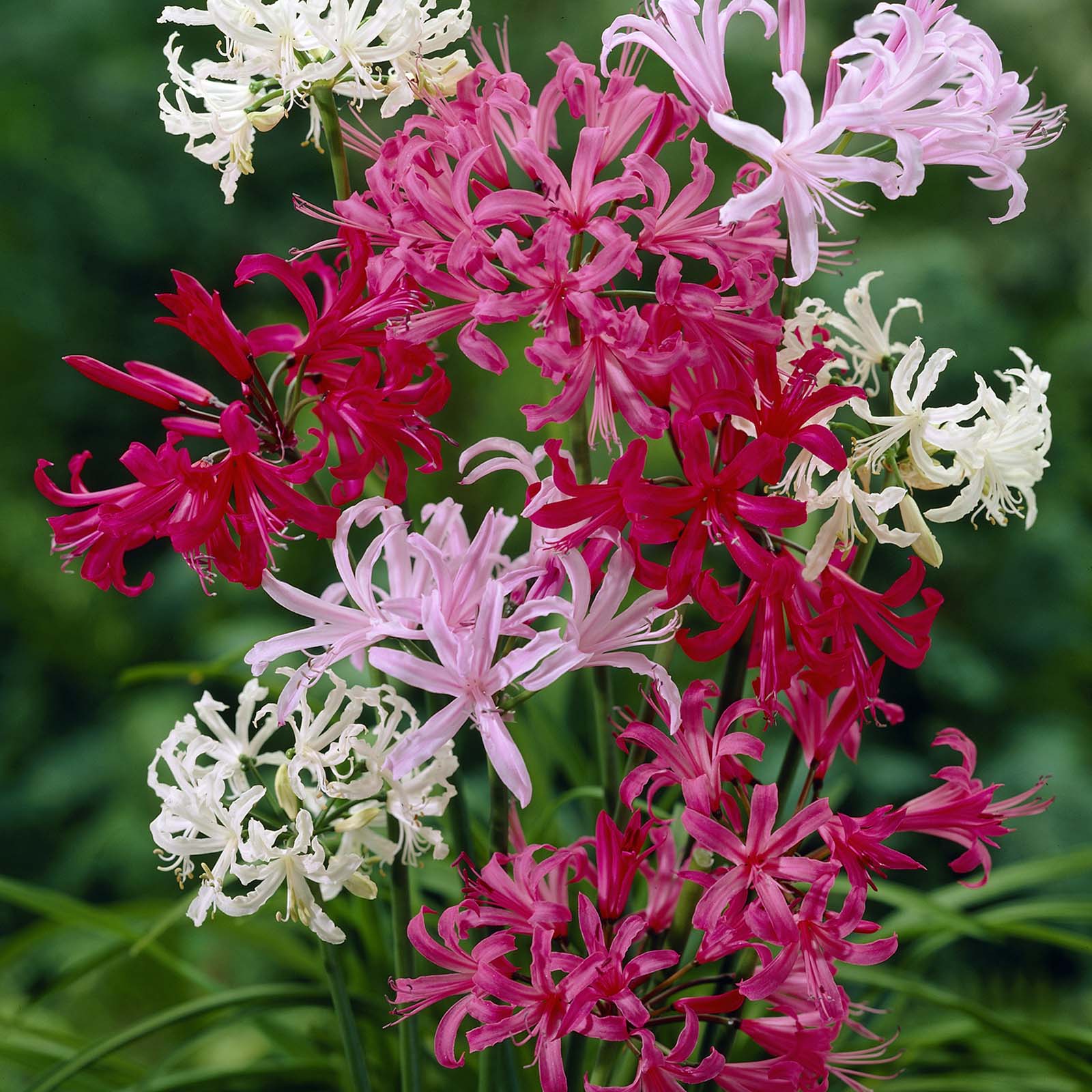Nerine
(Nerine)

Description
Nerine is a genus of flowering plants belonging to the Amaryllidaceae family, subfamily Amaryllidoideae. They are bulbous perennials, some evergreen, associated with rocky and arid habitats. They bear spherical umbels of lily-like flowers in shades from white through pink to crimson. In the case of deciduous species, the flowers may appear on naked stems before the leaves develop. Native to South Africa, there are about 20–30 species in the genus. Though described as lilies, they are not significantly related to the true lilies (Liliaceae), but more closely resemble their relatives, Amaryllis and Lycoris. The genus was established by the Revd. William Herbert in 1820. Nerines have been widely cultivated and much hybridized worldwide, especially Nerine bowdenii, N. sarniensis and N. undulata (previously known as N. flexuosa). The hybrid cultivar 'Zeal Giant' has gained the Royal Horticultural Society's Award of Garden Merit. The other 20 species are rarely cultivated and very little is known regarding their biology. Many species are threatened with extinction due to the loss or degradation of their habitat. Species of Nerine are herbaceous perennial bulbous flowering plants. In the case of deciduous species, the inflorescence may appear on naked stems before the leaves develop (hysteranthy), otherwise they appear together with the flowers (synanthy) or afterwards.The bulbs may have a short neck, but this is absent in other species. The leaves are filiform (threadlike) (as in N. filifolia; Figure 1D) to linear and flat and strap-shaped (as in N. humilis; Figure 2C). Their flowers, which are few, are borne in spherical umbels on a solid leafless stem (scape or peduncle). The stem may be slender or robust, and rarely minutely puberulous (hairy), with two lanceolate (lance shaped) spathe-valves (spathal bracts) surrounding the inflorescence. The pedicels (flower stalks) may be glabrous (hairy) or smooth, a feature used in differentiating species.Individual flowers are lily-like, generally with a perianth that is zygomorphic (with one plane of symmetry) but may be actinomorphic (radially symmetrical or "regular"). Each flower is flared, usually with a short extended or recurved perianth tube, consisting of six narrow white, pink or red tepals (perianth segments) joined at the base to form the tube. The free parts of the tepals are generally narrowly oblanceolate (wider near tip) and undulate (wavy) with crisped (curly) margins.The six stamens may be declinate (curvy) or erect, are unequal and are inserted into the base of the tepals, and are connate (fused) at their bases, frequently protruding from the flower. The stamen filaments are thin and filiform, but may be appendiculate (bearing appendages) at their base, a feature that is also important in differentiating species. Their anthers are versatile (swinging freely) and oblong and attach to the filament at the back (dorsifixed).The pollen is bisulcate (two grooves).The inferior ovary is subglobose (slightly flattened sphere) and trilocular (three-lobed or three locules), with one to four ovules in each loculus. The style is filiform, straight or declinate and has an obscurely tricuspidate (three tipped) stigmatose apex.The fruit is a subglobose dry loculicidal dehiscent capsule, that produces between one and a few seeds per loculus that are globose to ovoid, red-green and often viviparous (begin to develop before separating).Chromosome number: 11 (2n=22),but rarely 2n=24 or triploids.
Taxonomic tree:







